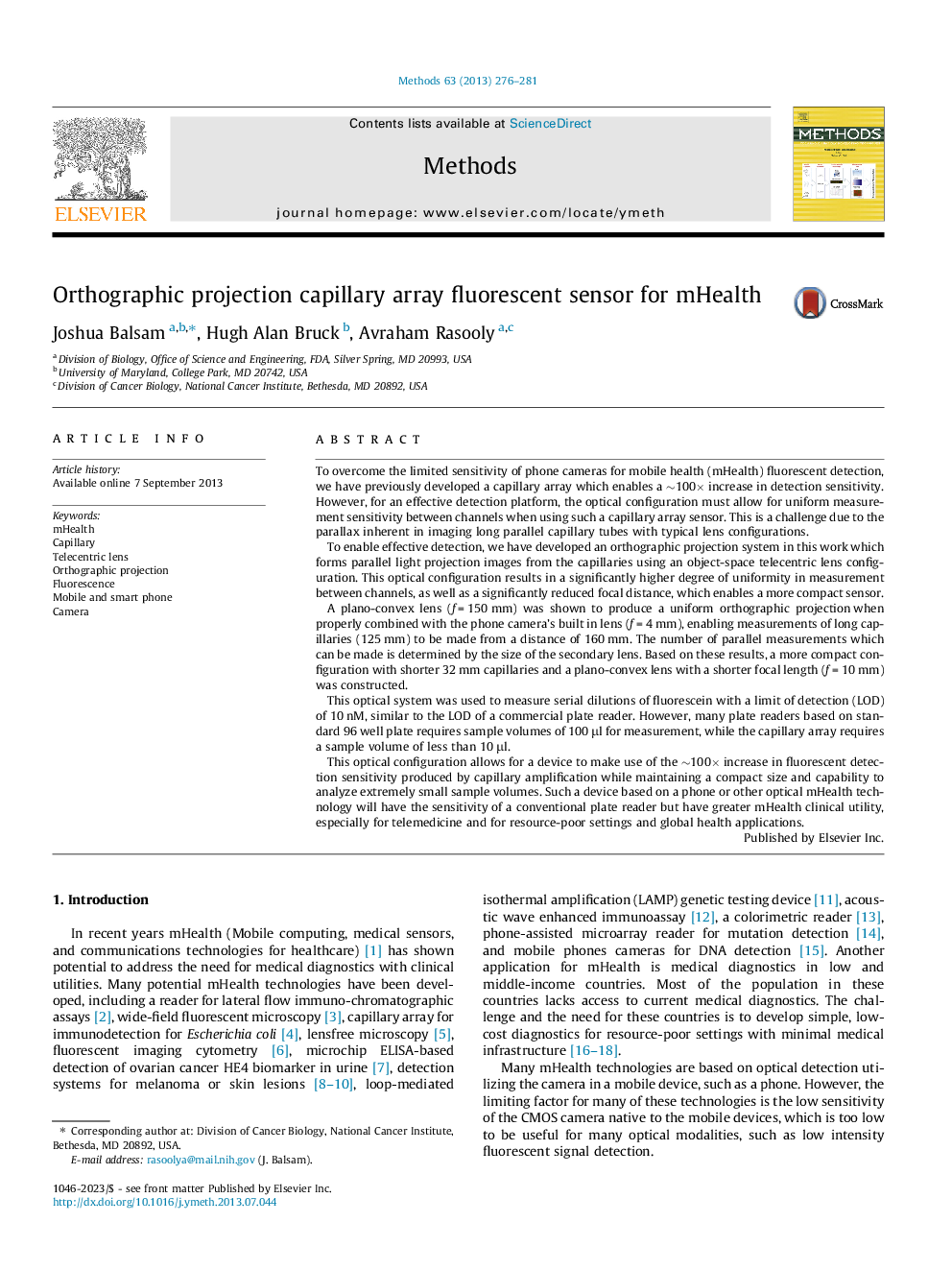| کد مقاله | کد نشریه | سال انتشار | مقاله انگلیسی | نسخه تمام متن |
|---|---|---|---|---|
| 1993543 | 1064677 | 2013 | 6 صفحه PDF | دانلود رایگان |

To overcome the limited sensitivity of phone cameras for mobile health (mHealth) fluorescent detection, we have previously developed a capillary array which enables a ∼100× increase in detection sensitivity. However, for an effective detection platform, the optical configuration must allow for uniform measurement sensitivity between channels when using such a capillary array sensor. This is a challenge due to the parallax inherent in imaging long parallel capillary tubes with typical lens configurations.To enable effective detection, we have developed an orthographic projection system in this work which forms parallel light projection images from the capillaries using an object-space telecentric lens configuration. This optical configuration results in a significantly higher degree of uniformity in measurement between channels, as well as a significantly reduced focal distance, which enables a more compact sensor.A plano-convex lens (f = 150 mm) was shown to produce a uniform orthographic projection when properly combined with the phone camera’s built in lens (f = 4 mm), enabling measurements of long capillaries (125 mm) to be made from a distance of 160 mm. The number of parallel measurements which can be made is determined by the size of the secondary lens. Based on these results, a more compact configuration with shorter 32 mm capillaries and a plano-convex lens with a shorter focal length (f = 10 mm) was constructed.This optical system was used to measure serial dilutions of fluorescein with a limit of detection (LOD) of 10 nM, similar to the LOD of a commercial plate reader. However, many plate readers based on standard 96 well plate requires sample volumes of 100 μl for measurement, while the capillary array requires a sample volume of less than 10 μl.This optical configuration allows for a device to make use of the ∼100× increase in fluorescent detection sensitivity produced by capillary amplification while maintaining a compact size and capability to analyze extremely small sample volumes. Such a device based on a phone or other optical mHealth technology will have the sensitivity of a conventional plate reader but have greater mHealth clinical utility, especially for telemedicine and for resource-poor settings and global health applications.
Journal: Methods - Volume 63, Issue 3, October 2013, Pages 276–281